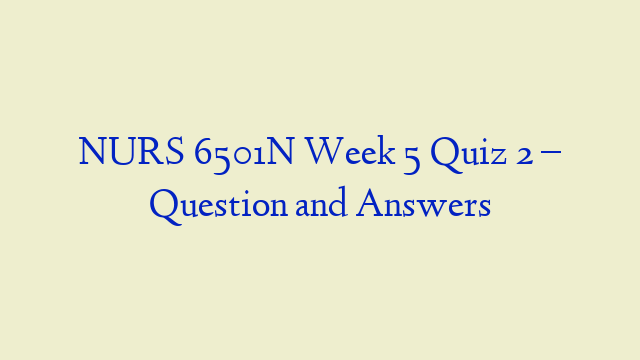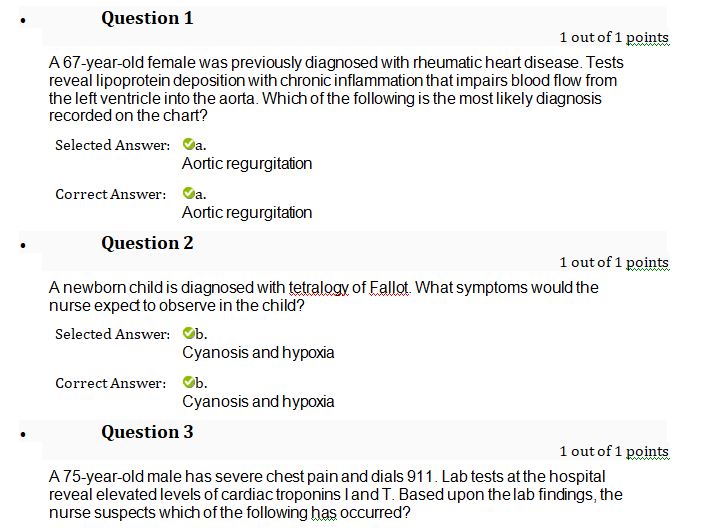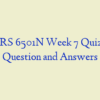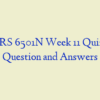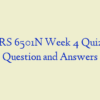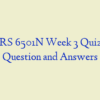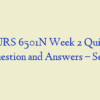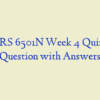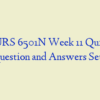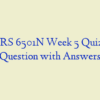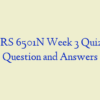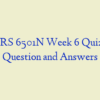Description
NURS 6501N Week 5 Quiz 2 – Question and Answers
- A 67-year-old female was previously diagnosed with rheumatic heart disease. Tests reveal lipoprotein deposition with chronic inflammation that impairs blood flow from the left ventricle into the aorta. Which of the following is the most likely diagnosis recorded on the chart?
- A newborn child is diagnose with tetralogy of Fallot. What symptoms would the nurse expect to observe in the child?
- A 75-year-old male has severe chest pain and dials 911. Lab tests at the hospital reveal elevated levels of cardiac troponins I and T. Based upon the lab findings, the nurse suspects which of the following has occurred?
- What factors make a patient prone to neurogenic shock? Neurogenic shock can be …..by any factor that inhibits the:
- A 20-year-old male underwent an echocardiogram to assess chest pain. Results …..a congenital defect in papillary muscles. Which of the following would the nurse expect to occur?
- A 60-year-old female had a myocardial infarction. She was brought to the hospital 30 minutes later. She survived, but now the nurse is providing care for impaired ventricular function because:
- A 27-year-old male is admitted to a neurologic unit with a complete C-5 spinal cord transection. On initial assessment, he is bradycardic, hypotensive, and hyperventilating. He appears to be going into shock. The most likely mechanism of his shock is:
- A newborn experiences frequent periods of cyanosis, usually occurring during crying or after feeding. Which of the following is the most likely diagnosis the nurse will observe on the chart?
- A 20-year-old female is being admitted to the hospital with fever and septic shock. Which set of assessment findings would the nurse expect the patient to exhibit?
- A 28-year-old female presents to the ER reporting severe chest pain that worsens with respirations or lying down. She has a fever, tachycardia, and a friction rub. Based upon the assessment findings, the nurse determines the patient is experiencing:
- A nurse recalls the most common cardiac valve disease in the United States, which tends to be most prevalent in young women, is:
- A nurse is teaching staff about endocarditis. Which information should the nurse include? Inflammatory cells have difficulty limiting the colonization of microorganisms in infective endocarditis because the:
- A 1-month-old infant was ….with truncus arteriosus (TA) with a ventricular septal defect. Which of the following would the nurse also expect?
- A 56-year-old male presents to his primary care provider for a checkup. Physical exam reveals edema, hepatomegaly, and muffled heart sounds. Which of the following is of greatest concern to the nurse?
- While planning care, the nurse remembers which principle? In valvular _____, the valve opening is constricted and narrowed because the valve leaflets, or cusps, fail to open completely nurs 6501n week 5 quiz
- Which is the most common type of congenital heart defect the nurse should assess for in infants?
- When a patient asks the nurse what is the most common cause of myocardial ischemia, which statement is the correct response? The most common cause of myocardial ischemia is:
- A 42-year-old female is diagnose with constrictive pericarditis. The nurse assesses the blood pressure for decreased cardiac output because of:
- A 3-year-old male is …..with Kawasaki disease. Which of the following does the nurse suspect is the most likely cause?
- A 10-year-old male presents with fever, lymphadenopathy, arthralgia, and nose bleeds. He is diagnose with rheumatic heart disease. While planning care, which characteristic changes should the nurse remember?
- A 60-year-old female was diagnosed with mitral stenosis. As a result, the nurse realizes the patient has incomplete emptying of the nurs 6501n week 5 quiz
- A nurse is planning care for a patient in shock. Which principle should the nurse remember? During shock states, glucose uptake is usually:
- A 52-year-old female is …..to the cardiac unit with a diagnosis of pericarditis. She asks the nurse to explain where the infection is. In providing an accurate description, the nurse states that the pericardium is:
- A newborn child has a murmur and cyanosis. An echocardiogram reveals that the tricuspid valve failed to develop and no blood flows between the right atrium and ventricle. What term will the nurse use to describe this condition? Tricuspid:
- A 22-year-old pregnant female presents for a fetal echocardiogram. Tests reveal small left atrium and mitral valve and an absent left ventricle and aortic valve. The diagnosis is hypoplastic left heart syndrome (HLHS). The nurse will anticipate that the treatment for this defect is:
- A 2-week-old infant presents with poor feeding, fatigue, dyspnea, and a murmur. She is diagnose with a patent ductus arteriosus (PDA). A nurse recalls this condition results in a(n):
- A newborn baby is severely cyanotic. An echocardiogram reveals transposition of the great arteries. A nurse assesses for which of the following, as it usually occurs with this defect?
- A 49-year-old male presents to his primary care provider reporting chest pain. EKG reveals ST elevation. He is ….with myocardial ischemia. Which of the following interventions would be most beneficial?
- A 72-year-old female has a history of hypertension and atherosclerosis. An echocardiogram reveals backflow of blood into the left ventricle. Which of the following is the most likely diagnosis document on the chart?
- A 30-year-old female presents to her primary care provider with fever, cardiac murmur, and petechial skin lesions. She is …..with infective endocarditis. When the patient wants to know what caused the disease, what is the nurse’s best response? The most likely cause of the disease is:

